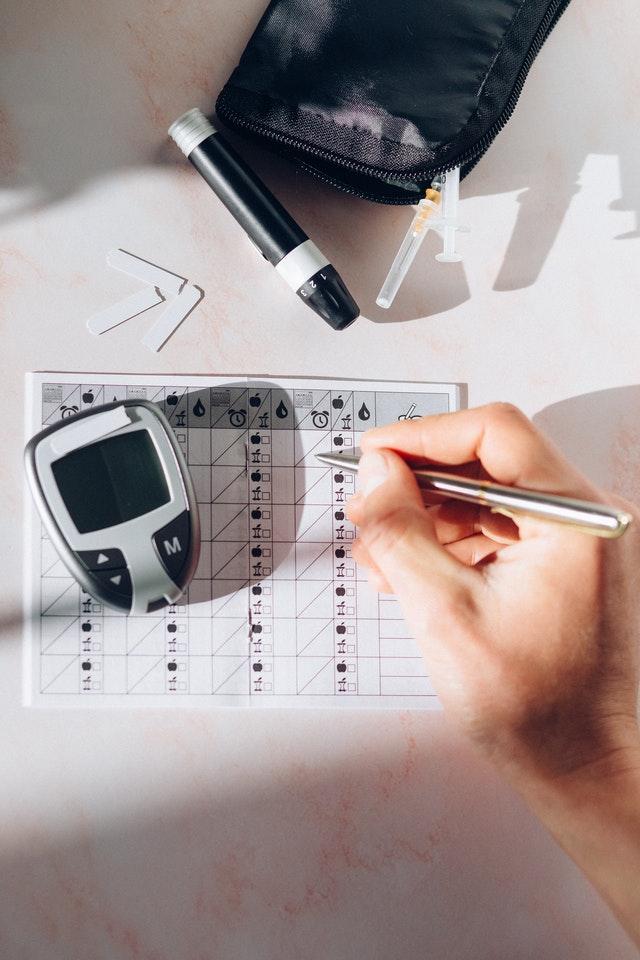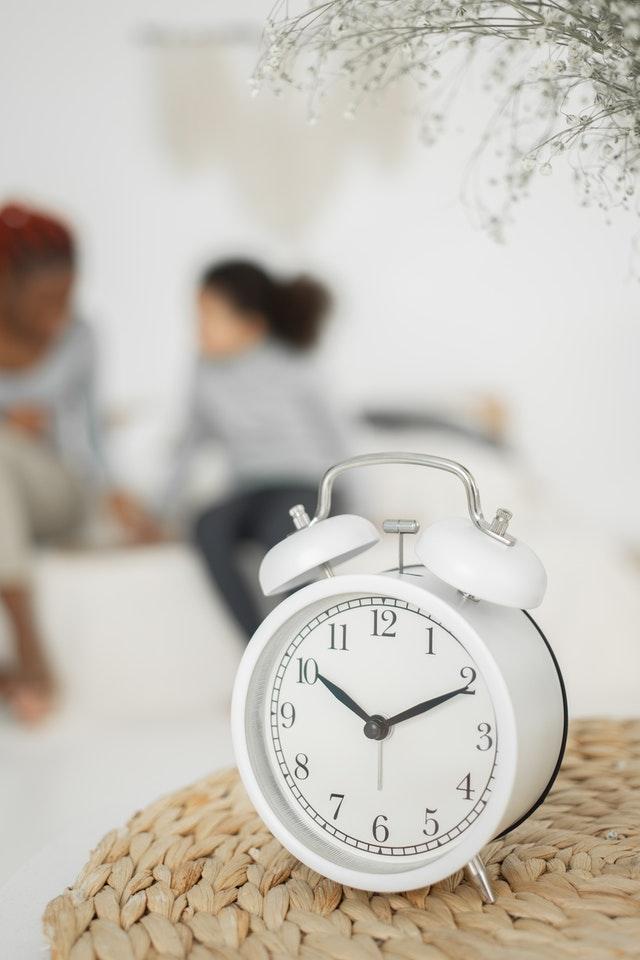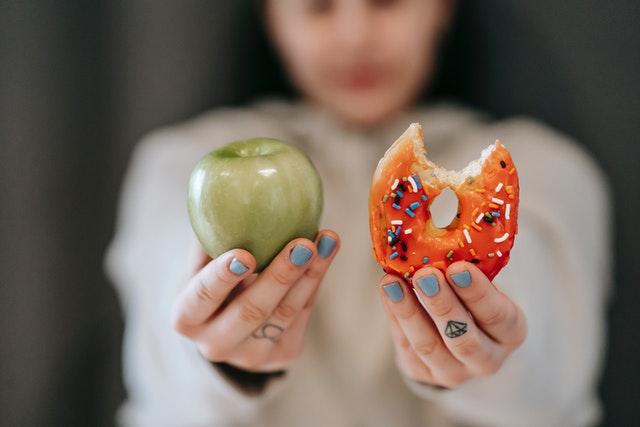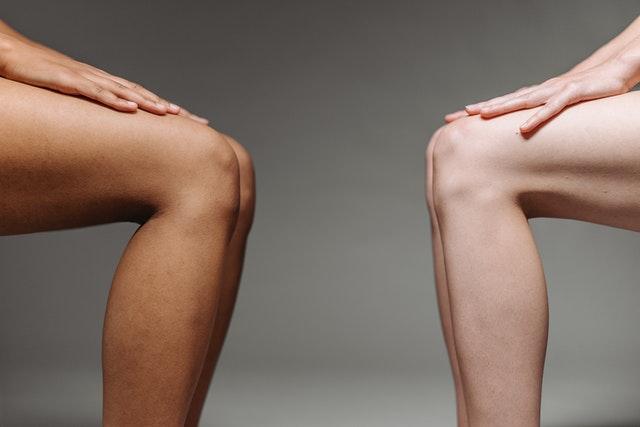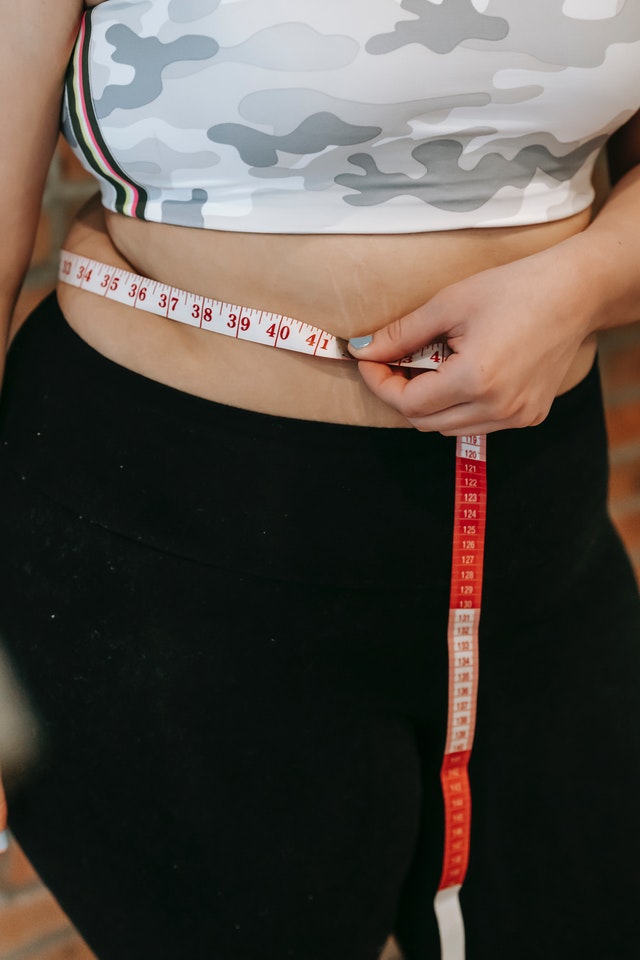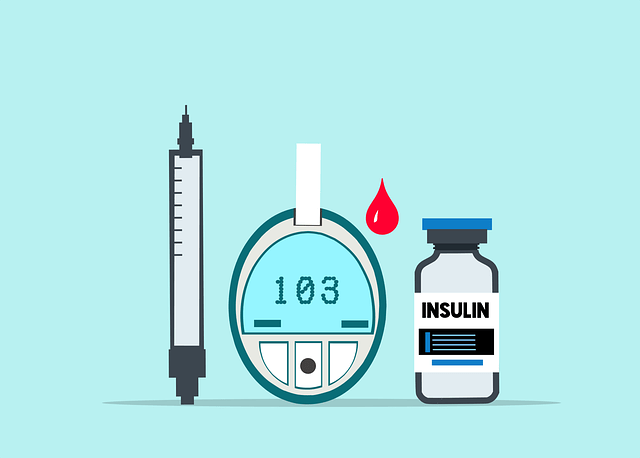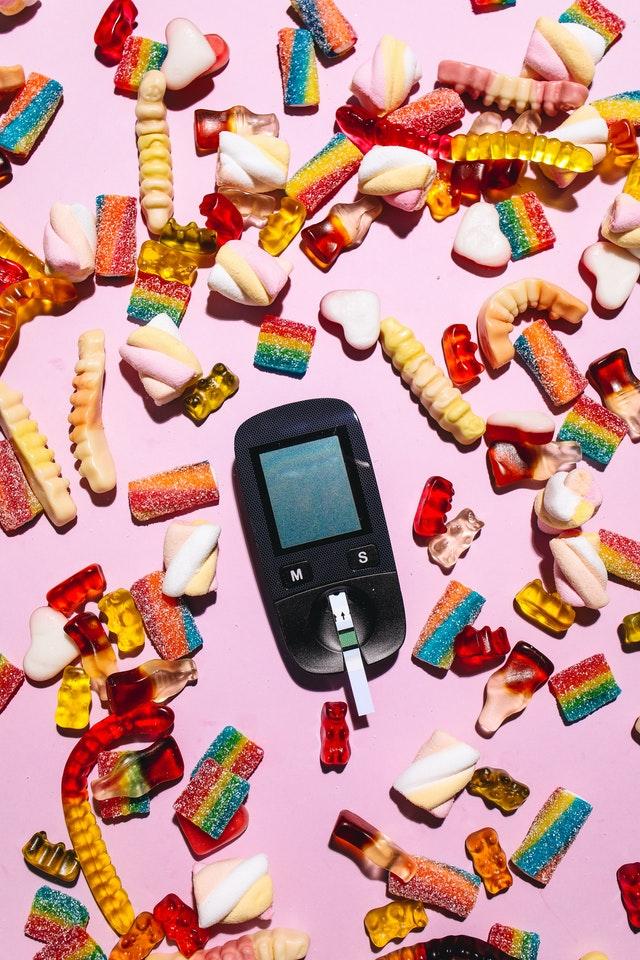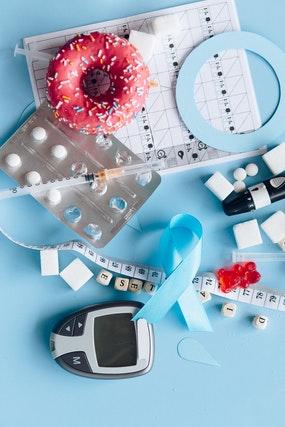Archive for June 2022

What Should My Blood Sugar Be When I Wake Up?
The most important thing that you should do each morning as you wake up is to check your blood sugar. Essentially, you can be able to determine how you go about the activities for the rest of your day by fasting blood sugar readings. Having a morning blood sugar level chart will help you know how high or low your fasting blood sugar is every morning. This will then enable you to set your morning target or what things you can do for you to achieve your target. Continue reading to find out more details about morning blood sugar.
What should my blood sugar be when I wake up?
Managing your overnight and morning readings is crucial if you want to control your blood sugar. Here are some of the details on what your morning blood sugar range reading should be as you wake up: –
– Fasting/ On Waking Up
- If you are not diabetic, your blood sugar reading should be around 70 – 99 mg/dl.
- If you are diabetic then your blood sugar reading should be between 80 – 130 mg/dl.
- Should your blood sugar reading be below 70 mg/dl then you have low blood sugar and it indicates a hypoglycemic reaction. Moreover, you have a high blood sugar condition should the reading indicate over 130 mg/dl.
– 2 hours after Meals
Your blood sugar should compare as following if you check it 2 hours after taking your meals:
- When you do not have diabetes then your normal blood sugar reading should be less than 140 mg/dl.
- If you have diabetes then your normal blood sugar reading should be less than 180 mg/dl.
– With HbA1c (Hemoglobin A1c)
Taking a Hemoglobin (HbA1c) test will enable you to determine your average blood sugar readings for the last 2 or three months. Additionally, you can take this test if you have not checked your blood sugar level reading for quite some time or if you have never checked it before since you think you do not have diabetes. After taking the test, your results are normal if:
- Your reading is less than 5.7% and you do not have diabetes.
- The reading is less than 7.0% and you have diabetes.
Symptoms of high blood sugar in the morning
You can determine whether or not you are experiencing the early morning hyperglycemia by having a routine check of your blood glucose each morning or by wearing a continuous glucose monitor (CGM). Further, you may be experiencing some signs and symptoms of hyperglycemia if you have the following: –
- Increased thirst
- Urination frequently and excessively.
- Eating more than you are used to.
- If you do not have a clear vision. Everything appears blurred.
How to Test Your Blood Sugar
You already have details on what your morning blood sugar range should be when you wake up. Consequently, you should also have information on the right way to test your morning blood sugar level. First, you should check your blood sugar level within the first 10 to 15 minutes after waking up in the morning for you to get an accurate reading. Second, it is recommended that you wash your hands thoroughly prior to taking or checking your blood sugar level when you wake up in the morning. Washing your hands thoroughly will help in getting rid of any contaminants that can cause inaccuracies in the results. Third, taking any caffeinated beverages before the test may lead to a spike in your blood sugar level. Therefore, you should avoid taking any caffeinated beverages at all costs if you want to get the correct blood sugar level.
What if Your Morning Blood Sugar Level is High?
You may have relatively higher blood sugar levels in the morning which is quite natural. The relatively higher blood sugar levels in the morning are because of certain hormonal changes in your body. Should this happen, your body will produce enough insulin that will aid in normalizing your morning blood sugar level. However, if you have diabetes, this may not happen.
You may also have a condition in which the fat cells and muscles in your body fail to use insulin effectively. This condition is called insulin resistance and it may lead to your blood glucose levels staying higher. Besides, if you have this condition, it will affect your liver functions and therefore lead to changes in the manner it processes and releases sugar, mostly during nighttime as you sleep.
However, when you have type-2 diabetes, the situation may be different since your liver will start releasing a large amount of glucose than is required in your blood. Therefore, it will lead to your blood sugar level elevating in your system because of your hormones and liver. When your hormones cause your blood sugar to spike and your liver also releases more glucose than is required the level of your morning blood sugar will stay higher unless you maintain a strict diet and exercise. Moreover, you may be required to take medications for better management of your blood sugar levels.
Ways to Help You Prevent High Morning Readings
As you already know, your blood sugar level when you wake is determined by whether you are diabetic or not. Luckily, there are certain things that you can do to help in preventing your blood sugar levels from rising above normal in the morning and they include: –
- Manage Your Body weight
Losing weight is essential in managing your glucose levels especially if you are overweight and have been diagnosed with type-2 diabetes recently. Losing weight will help in regulating your hormones and increasing your insulin sensitivity hence lowering the sugar levels in your blood. When you are overweight and you want to lose weight, you should start by checking your diet for example by avoiding processed foods and eating a lot of fruits and veggies. You should also reduce the intake of less healthy foods in your diet. You can also improve your physical activities.
- Check your blood glucose before bed.
The glucose levels in your blood are likely to stay constant the entire night especially if they are high as you are going to sleep. You can lower your glucose levels if they are high before going to bed by changing the content of your food and eating time. Additionally, you can do light physical exercise like walking from 10 – 15 minutes to reduce your blood glucose levels should they be high. Despite adding some light exercise before bed, and changing what time you eat and what you eat, you may also need to adjust the quantity of mealtime insulin that you take to cover it.
- Avoid certain foods
The duration at which you take certain food before bedtime should also change. You should avoid taking large, late dinner or nighttime snacks right before going to sleep. Besides, it is recommended that you eat low-carb, take early dinner, and then no snacks afterward as per One strategy from Adam Brown.
- Insulin
Taking enough insulin quantity to cover your evening meal is also great in preventing high morning blood sugar readings. For example, your glucose levels will be elevated the entire night and in the morning readings if you take a low insulin dose. Therefore, you should ensure to take the right insulin dosage.
- Have a Bedtime snack
Before going to bed, you should eat something to help in stabilizing your blood sugar. However, whatever you eat should not contain more than 20g of carbs. Taking a bedtime snack will prevent your liver from producing an unwanted amount of glucose as you sleep. Some of the low-carb bedtime snacks that you can take include low-fat yogurt, frozen grapes, soybeans, a serving of fresh salsa and tortilla chips, and a small piece of fruit.
- Evening exercise
Another way of reducing your glucose levels in the morning is by doing exercise in the evening. Despite exercising before bed helping in bringing the levels of glucose down in the morning, it may be dangerous. This is because the exercise may lead to a lowering of glucose over the hours as you sleep hence leading to dangerous hypoglycemia.
- Morning exercise
The dawn phenomenon or another reason may cause your blood glucose levels to be high. You can lower the high glucose levels in your blood by doing morning exercise.
A Quick Tip
You should talk to your doctor before trying to manage your blood sugar levels. Additionally, you should also keep in mind your blood sugar reading, your lifestyle, your A1C results, and any other medication that you may be taking before trying to manage your morning blood sugar levels.
Your fasting blood sugar readings are also crucial since they will let you know how your body has worked while you are sleeping at night. Therefore, with the fasting blood sugar readings, you will be able to make the necessary changes that you may need for better control of your situation.

Common Diabetic Skin Conditions
When a person has diabetes, it throws their whole body off balance. They not only have to worry about the natural things that come with everyday life like eating healthy, getting enough sleep and exercising, but they also have to be mindful of all the complications that arise from their disorder. Diabetic skin problems is one of the most common concerns diabetics face. 30% of diabetics will develop skin conditions related to their diabetes.
Some of the most common skin conditions diabetics face are dry skin, and also itchy, red, and scaly legs. For the ones with type 2 diabetes, they are more vulnerable to developing a skin condition. Here is a close look on the common diabetic skin conditions.
Diabetic Dermopathy
This is a common skin condition that occurs in people with diabetes. It is characterized by reddish or light brownish spots on the legs. In most cases, it is found on top of the feet, thighs and shins. There have been reports that diabetic dermopathy can lead to permanent skin discoloration if left untreated.
Cause of Dermopathy
Dermopathy is the damage caused on the skin that leads to the formation of these brownish spots. This can be caused from dryness and itching due to poor circulation and itching. The disease is more common in older people and those with type 2 diabetes.
Mostly, after trauma or injury, these spots will take up to 2 weeks to form. Dermopathy is considered as a complication of diabetes and the lack of blood in the area where the skin damage occurs is responsible for this condition.
Dermopathy Signs and Symptoms
When the skin is in contact with water, it will form a dark ring around the damaged area. This dark ring is commonly seen when you are taking a bath or shower. Dermopathy will appear on the legs in areas like ankles, knees and thighs. The spots will turn brown and scaly as they enlarge.
Dermopathy Treatment
Dermopathy is not a serious skin condition. However, it is important to address the problem early to avoid further complications. People with diabetes should take good care of their skin by practicing good hygiene and using moisturizers to prevent further damage.
Diabetic Bullae
Also known as diabetic blisters, this skin condition develops when a person’s skin is exposed to too much moisture. It is usually found in the neck and armpits.
Cause of Bullae
In diabetes, the blood vessel in the skin becomes fragile, thus leading to increased blood flow and heat. When this happens, the blood vessels within the skin experience damage. In response to this damage, the skin will raise a blister on its surface.
Bullae Signs and Symptoms
The first sign of this condition is a reddish spot on the skin. The spot will expand and it will turn up to become red, painful, and itchy. The blisters should be popped and treated to prevent infection.
Bullae Treatment
To prevent infection of the affected area, it is best to wash the affected skin with antibacterial soap at least twice each day. The blisters should be popped as soon as they appear.
Diabetic Stiff Skin Syndrome
Also known as diabetic dry skin, this skin condition develops when a person’s skin cannot return back to its normal state after being stretched. It is usually found on joints like the fingers and toes.
Cause of Stiff Skin Syndrome
The stiffness of the skin is caused by the lack of collagen in your blood vessels. In diabetes, the amount of collagen produced by your body is less than normal. When this happens, the skin cannot return back to its normal state after being stretched.
Signs and Symptoms of Stiff Skin Syndrome
When this condition develops, the skin of a person will be rough and hard. The person will feel pain when stretching the affected area. In some cases, it can lead to the development of ulcers on the area.
Stiff Skin Syndrome Treatment
Stiff skin syndrome can be treated by restoring the blood supply to the affected area. This can be achieved by wearing cotton gloves when you are doing your daily activities. Also, it is important to keep the skin hydrated and moist to help in flushing out the excess waste your body produces.
Other Common Skin Conditions
Here are some of the other common skin conditions diabetics face:
1. Scleroedema – Scleroedema is a skin condition that occurs from the development of edema in the body. Mostly around the neck and upper back.
2. Scabies or pubic lice – This condition is caused when the body’s immune system is unable to attack and destroy the parasites.
3. Acanthosis nigricans – Most of the cases of this skin condition are seen on the back, chest and neck. It is characterized by dilated blood vessels that are dark and velvety-looking.
4. Vitiligo – This condition is characterized by white pigmentation loss of skin. It is caused by a lack of pigment in the hair and skin.
5. Corneal ulcer – This skin irritation occurs when the natural substances that protect the eye from infection is depleted or damaged.
How to Manage Diabetic Skin Conditions
To help manage your diabetic skin conditions, it is best to practice the following:
i. Maintain a healthy diet
Your diet plays an important role in your health. Eating the right kind of food will not only help prevent diabetes but it will also help you manage its complications. The foods you eat should be filling and provide sufficient nutrients to your body. Make sure that your diet is not lacking in fiber as it can help to purge toxins from your skin. Also, eat healthy fats like Omega-3 fatty acids and Omega-6 fatty acids.
ii. Manage your stress level
Managing your stress is one of the best ways to help combat diabetes. It is a stressful condition that can trigger or aggravate the skin conditions you have. One way you can manage your stress level is by exercising regularly. Exercise is an effective way to manage stress because it helps you to destress and relieve your body of excess toxins.
iii. Take care when showering or bathing
Avoid taking too hot of a bath or shower. The water will increase your skin’s temperature and it may cause the blood vessels to dilate and expand. Taking a hot shower can also dry out the skin causing it to become dry and brittle.
iv. Use moisturizers
Moisturizers help keep your skin moist, soft and supple. Apply moisturizer on your skin as soon as you get out of the bath or shower. This will help to prevent your skin from getting irritated and cracked.
Diabetes takes a toll on the body. It cannot only make you sick but it can also make you look old and unattractive. The condition can cause a variety of skin problems like the ones we discussed above. The good news is, managing your diabetes will also help you manage your skin. Follow the above guidelines and you will surely feel better about yourself.

What Are Common Diabetic Symptoms?
Diabetes affects up to 10% of the American population, according to the CDC. It is on the rise, with at least 1.5 million cases diagnosed yearly. Sadly, 1 in every 5 people is unaware they have the disease in the United States. Below shall be discussed the different diabetic symptoms.
The Negative Effects of High Blood Sugar Levels to the Body
The eyes
Diabetes increases your chances of experiencing dangerous vision problems that could lead to blindness. Some of these issues include:
- Glaucoma: Damages the nerve connecting your eye to the brain, leading to serious vision problems.
- Cataracts: The lens of your eye gets affected and becomes cloudy
- Retinopathy: The retina at the back of your eye changes.
The heart
Your heart’s nerves and blood vessels are at risk of damage after experiencing high blood sugar for a prolonged period. This increases the risk of heart diseases, including heart failure, stroke, and heart attacks.
The risk increases even more when you suffer from high cholesterol levels.
The kidneys
Diabetes affects the functioning of your kidney’s blood vessels. After a while, they may even stop working, leading to kidney failure.
The feet
With high blood sugar, blood flow to your feet is negatively affected. This leads to nerve damage which can cause sores, scrapes, and cuts not to heal in good time. With nerve damage, your feet may get injured without your knowledge leading to infections.
Sometimes, the infections get worse, and one may need an amputation.
The nerves
High blood sugar causes diabetic neuropathy (nerve damage). The side effects include pain, numbness, and tingling sensations, primarily in your feet.
The skin
Your skin becomes weak when you have diabetes. Scaly patches, yeast infections, and itching are some issues you may experience on your skin.
Erectile dysfunction
Since high blood sugar affects blood flow and nerves in the body, it can get complicated for a man to maintain an erection. Men with diabetes may experience a hard sex life.
Is it Possible for You to Tell if You Have Diabetes?
Well, yes and no, depending on the type you have. Warning signs for type 2 diabetes are quite subtle and can go undetected until one starts experiencing long-term effects. For type 1 diabetes, on the other hand, the signs appear in less than a month and are much more aggressive.
Early symptoms are a result of higher than normal glucose levels.
Diabetes Warning Signs / Diabetic Symptoms
Early signs of diabetes are quite similar for both type 1 and type 2, and they include:
1. Feeling thirsty constantly and peeing more often than usual – Diabetic Symptoms
Normally, humans pee up to 7 times a day. However, with diabetes, the frequency increases. Our bodies reabsorb glucose from the kidneys, but high blood sugar makes it hard for the necessary amount to be reabsorbed.
This leads to the production of more urine, which requires fluid from your body. As a result, you pee more often than usual, and because of passing that large amount of liquid, you get thirsty more often than average.
Interestingly the more liquids you intake, the more you pee.
2. Blurred vision – Diabetic Symptoms
The lenses of your eyes may swell up due to changes in body fluid levels when you have diabetes. This leads to poor vision because the shapes of your eyes change.
3. Hunger and fatigue – Diabetic Symptoms
For energy, the body converts the food you eat into glucose. However, you need insulin to absorb the converted glucose into your body cells. With diabetes, your body may become insulin resistant or produce it in fewer quantities.
This leads to fatigue and feeling hungry more than usual.
4. Itchy skin and dry mouth – Diabetic Symptoms
With diabetes, you lose so much fluid from your body through urination. The body needs this fluid to keep your skin and mouth hydrated. Without it, your skin becomes itchy while your mouth experiences dryness.
Type 1 Diabetes Symptoms
- Frequent nausea and vomiting
Our bodies burn fat and produce ketones. When you have type 1 diabetes, the ketone levels produced are higher than expected, and they can lead to a dangerous condition known as diabetic ketoacidosis.
High ketone levels make you feel sick in the stomach, causing you to vomit and feel nausea more often than normal.
- Unexpected weight loss
Since the body fails to absorb as much glucose as needed, it burns fats and muscles for energy. This will cause you to lose weight rapidly without even changing your diet. Taking foods high in trans fatty acids is advised to boost your health.
Type 2 Diabetes Symptoms
Type two diabetes symptoms take some time to show. These symptoms occur due to high glucose levels in your body for a prolonged period, and they include:
- Numbness or pain in your legs and feet
These may occur due to nerve damage caused by the disease.
- Persistent yeast infection in different parts of the body
Men and women with type 2 diabetes experience yeast infections in parts of the body where it is warm, and the skin folds under the breasts, between the toes and fingers, and around the sex organs.
This is because yeast feeds on glucose, and these areas have plenty of glucose.
- Sores and cuts begin to heal slowly
High blood sugar levels affect blood flow and also cause nerve damage. Because of these, your sores and cuts start to heal slower than before.
What are Gestational Diabetic Symptoms?
When pregnant, you may experience no signs of high blood sugar levels. However, you may notice that you urinate more frequently and get thirsty often.
How to Tell you are Experiencing Diabetes Complications
Warning signs of type 2 diabetes include:
- Impaired vision
- Erectile dysfunction
- Cuts and sores heal slower
- Itchiness, especially around the sex organs
- Recurring yeast infections
- Your skin may appear darker or velvety around the neck, groin, and armpits. This condition is known as acanthosis nigricans
- You may begin to gain weight
What is Hypoglycemia?
Also known as low blood sugar, hypoglycemia occurs when your glucose and sugar levels in the blood are too low to produce energy. Some signs include:
- Trembling
- Nervousness
- Confusion
- Impatience and crankiness
- Dizziness
- Frequent hunger
- Always feeling sleepy
- Recurring fatigue
- Feeling cold, clammy, or sweating more than usual
- Numbness or tingling sensations around your cheeks, tongue, and lips
With hypoglycemia, you may notice these few changes in your body:
- Problems with body coordination
- Repeated seizures
- Your skin gets pale
- A faster heartbeat rate
- Recurring headaches
- Blurred vision
- Unusual nightmares and crying in your sleep
What is Hyperglycemia?
The medical term for hyperglycemia (high blood sugar) is hyperosmolar hyperglycemic nonketotic syndrome (HHNS). This condition has many warning signs, including those we have listed for diabetes, and they are:
- Frequent urination
- Persistent hunger
- Feeling thirsty frequently
- Blurred vision
- Fatigue
- Sugar in the urine
- Blurred vision
- Tingling sensations or numbness in the feet
- Skin and vaginal infections
- Unexpected weight loss
- Slow-healing cuts and sores
- Blood glucose levels that are over 180 mg/dl
Hyperglycemia is a severe condition in either type of diabetes (more common in type 2) which can lead to diabetic coma and sometimes death. When your blood sugar levels skyrocket, you end up more dehydrated, and symptoms include:
- Persistent thirst
- Dry mouth
- Blood sugar levels above 600 mg/dl
- Confusion and insomnia
- Recurring fever of over 101 F
- Dry skin that stays warm with no sweat
- Hallucinations
- Eventual vision loss
- One side of your body becomes weak
What can You do Lower your Risk of Diabetes?
Adopting a good lifestyle and feeding habits is a sure way to reduce your risk of getting diabetes. Make these few things a part of your routine:
Maintain strict blood sugar control
To avoid diabetes, try your best to maintain your blood sugar levels within these ranges:
Before meals: 70-130 mg/dl
2 hours after meals: below 180 mg/dl
AIC or glycated hemoglobin level at 7%
Keep an eye on your blood pressure and cholesterol levels
Aside from diabetes, you may develop more severe health issues when your cholesterol and blood pressure rise above normal such as heart diseases. Try your best to maintain your cholesterol at or below 200 and your blood pressure below 140/190.
If it becomes a problem, your doctor can prescribe medication to help maintain these levels.
Go for checkups regularly
Your doctor can examine your blood and urine and perform other tests to detect any issues your body may be experiencing. These visits are vital because many diabetes complications have no obvious warning signs.
Avoid smoking
Inhalation of smoke raises your blood pressure and negatively affects your body’s blood flow. There are treatments available that can help you quit smoking.
Look for any cuts, bruises, ingrown toenails, redness, or swelling. Ensure you dry your feet after washing and apply some lotion to avoid cracked heels and dry skin. Protect your feet by wearing shoes outside and at the beach, and you can add socks during the cold weather.
Keep your eyes protected
Go for eye checkups at least once a year. This way, you will catch any issues early enough before they worsen.
Examine your feet every day
Before taking a bath, ensure the water is not too hot not to burn your feet, and always keep your toenails short and clean.
Keep your skin healthy
On areas where your skin rubs together, such as your armpits, apply talcum for protection. Avoid hot baths and showers or dry soaps and bath gels. Always keep your skin moisturized with hand and body lotion.
When to Seek Medical Attention
It is advised that you get tested for diabetes, especially if you have other conditions that might put you at risk or are above the age of 45. This will help you mitigate the side effects such as nerve damage.
Visit or call a doctor if you experience the following:
- Nausea and vomiting frequently
- Urinating a lot
- Consistent stomach aches
- You begin to breathe deeper and faster than normal
- Your breath smells sweet (like nail polish remover). This is due to high ketone levels in your body.)

When to Check Blood Sugar
If you are wondering when should you test your blood sugar then you are in the right place!
A glucometer helps in measuring blood sugar for people who are living with diabetes. The important thing is to know when to measure blood sugar. A Continuous Glucose Meter also helps in measuring blood sugar. It does so every few minutes and it’s a type of sensor.
You may think about when to check your blood sugar! And whether it’s for those who suffer from diabetes only.
Let’s find out today.
Why Checking Blood Sugar Is Important
It’s vital that you know why it’s important to check your blood sugar. Not checking the blood sugar means, it can vary and thus may lead to complications of the heart, kidney, and even problems in the vision.
It doesn’t matter whether someone suffers from Type 1 or Type 2 diabetes, checking the blood sugar level is important. It can help in keeping your health in check.
Lack of insulin, too many carbohydrates, certain medications, and a lot more can lead to rising in sugar levels. While too much insulin, too much physical activity, and other factors can also contribute to lower blood sugar levels.
The goal of checking the blood sugar levels is to keep the sugar levels in the blood in balance.
Constantly checking the blood sugar level may sound like a hassle but it’s important for the health of those who are suffering from diabetes. It’s also vital to be aware of your lifestyle and be mindful of your health.
When to Check Blood Sugar Level?
It’s vital to understand when it’s best to measure blood sugar levels. When you are aware of your blood sugar levels, it would give you a better understanding of how food affects your health.
Consider the following:
It’s best to measure the blood sugar level after taking the insulin. But it depends on whether the person needs to take the insulin or not. So, the best source of information and guidance here is the doctor.
Those with Type 1 diabetes would need to check before their breakfast, lunch, and dinner. They would also need to check two to three hours after their meals!
For those with Type 2 diabetes, it would depend on the condition and how well they are maintaining their health. So, the doctor would give the best information. But, it’s possible to check first thing in the morning before eating breakfast, two hours after they have a meal, and before bedtime also! It can be up to four times a day.
Each individual is unique so it’s vital that you understand what works for you and what doesn’t. A healthy and active lifestyle would always help. Eating a well-balanced diet is always ideal. Always consult your doctor when it comes to diabetes!
How to Measure Blood Sugar Level?
Now that you have some idea about the significance of measuring the blood sugar level, it’s vital that you also know how to measure it correctly.
Consider the following:
A blood sugar monitor can help in measuring the sugar level in the blood. You may know this device by the name of a glucometer. People using this device would need to prick their finger and test the sugar level in the small amount of blood.
It’s also possible to use a continuous glucose monitor that senses information from the fluids that are between your cells. It goes under the skin, but it’s worn on the belly or arm. It monitors and tells about the blood sugar, but it’s usually a prescription device.
The data would be on your smartphone or any smart device. You can share the data with your healthcare provider. The purpose of using such modern means of technology is to keep a close watch on your overall health. After all, your health matters a lot for everyone around you and also for yourself.
Friends and family members can help in measuring blood sugar levels. It’s also possible to do it yourself. You can ask your doctor to guide you more! It’s always best to let your doctor guide you.
When using any device for the first time, you can definitely ask someone to help you. Once you are used to it, it would be easier!
You can also follow the instructions that come with the device. It’s best to know how to use it and make the most of it. All such modern means of technology are here to make your life better and help you live a better and longer life. Your health matter to the world and to everyone who is around you.
Consult Your Doctor
Despite tons of information available online and video tutorials, it’s best to talk to your doctor or Endocrinologist about your health. Your best source of information is your doctor. Your doctor can suggest the medicine and would tell you what works best for your health! With an active lifestyle and managing your health based on the plan of your doctor, it would be easy to know more about your blood sugar levels.
Living with diabetes may sound hard, but there are many people around the world who are managing their lifestyles. Start by controlling your weight and make a plan with your doctor that works in your favor. Your doctor knows what’s best for your overall health so bear that in mind.
The good thing is that if Type 2 diabetes is well maintained then people would not need to check blood sugar levels that often, but when it’s still there so keeping an eye would be important.
Wrapping It Up
Knowing and understanding your blood sugar levels is essential for your well-being. When you know what affects your health, it would be easy for you to manage. A healthy lifestyle can help, but you need to discuss your health and overall situation with the doctor.
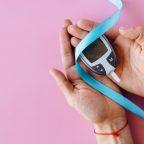
Hyperglycemia Levels
Hyperglycemia is a condition in which the level of glucose in the blood increases. A subject with a fixed range above 126 mg/dL or 7 mmol/L is generally considered hyperglycemic, while a fixed range below 70 mg/dL or 4 mmol/L is considered hypoglycemic.
Human blood glucose levels vary at different times of the day and before and after meals. Hyperglycemia may occur in individuals with undiagnosed diabetes. It can also occur if a person with diabetes does not follow their treatment regimen. Hyperglycemia can cause various symptoms.
The three classic symptoms of hyperglycemia are frequent urination, frequent hunger, and frequent thirst. Some other symptoms may appear, such as blurred vision, poor wound healing, dry mouth, fatigue, and others. Symptoms may not appear until blood glucose levels reach 15-20 mmol/L (270-360 mg/dL) or higher. Blood glucose levels that are a little higher than normal can cause long-term damage.
Glucose Levels
The level of glucose in the blood should be maintained in the normal range. Homeostasis plays an important role in the efficiency of the body in performing physiological processes. Changes in blood glucose, whether it is rising or falling, can affect the processes of the body. It may also cause damage.
Hyperglycemia can damage the kidneys and retina. It can also damage the heart and blood vessels. This condition can be caused by several conditions such as diabetes, physiological stress, serious illness, or certain medications. Treating hyperglycemia is aimed at treating the underlying cause.
For people with diabetes, it is very important to follow the treatment regimen. They also need to monitor their diet and lifestyle. It is also important to check your blood glucose levels regularly. If symptoms of hyperglycemia appear, it is highly recommended to consult a doctor immediately. This is necessary to make an accurate diagnosis and choose the appropriate treatment. It is also necessary to prevent the development of complications.
Types of hyperglycemia

Hyperglycemia in patients with diabetes can be of two types: fasting hyperglycemia or postprandial hyperglycemia.
Fasting hyperglycemia is a condition in which blood sugar levels exceed 130 mg/dL after fasting for at least 8 hours.
If you have postprandial hyperglycemia, your postprandial blood sugar should not exceed 140 mg/dL, except in rare cases associated with heavy metals. If postprandial hyperglycemia is persistently high, this may be a sign of the onset of type 2 diabetes.
In people without diabetes, hyperglycemia is usually caused by high levels of stress, medications, eating disorders, and a lack of regular exercise.
Meditation and stress sometimes disrupt blood sugar levels and develop into hyperglycemia. If you consume a lot of calories from complex and simple carbohydrates in your meals, your blood sugar levels will also rise.
Hyperglycemia Symptoms
The symptoms must be understood to know what to do when a person has hyperglycemia. You will usually notice hyperglycemia levels and high levels of sugar in your urine. Sometimes it also leads to frequent urination or increased thirst. Problems associated with hyperglycemia can be treated by starting appropriate treatment.
Common symptoms of hyperglycemia include:
- Excessive weight gain
- Impotence in men
- Dry skin
- Rashes in the groin
- Excessive thirst
- Frequent urination
- Blurred vision
- Fatigue
- Impaired wound healing
- Excessive hunger
- Itchy skin
- Chronic constipation or diarrhea
Differentiate Between Type 1 and Type 2 Diabetes.
Type 1 diabetes is caused by the pancreas not being able to produce enough insulin to process glucose. Therefore, there is more glucose in the bloodstream.
In type 2 diabetes, cells are unable to receive and use the energy produced in the body. The glucose level remains high.
Blurred vision, dizziness, and mental confusion due to the inability to think clearly can be caused by severe hyperglycemia. Uncontrolled hyperglycemia can be fatal and can lead to ketosis and eventually death.
Treating Hyperglycemia
Hyperglycemia is caused by several factors. If you have type 1 diabetes, hyperglycemia is often the result of insufficient insulin. For people with type 2, this may simply mean that your body is not using insulin the way it should. Sometimes this is the result of eating more than you planned, and sometimes it can be due to stress or illness.
Many everyday factors can affect whether or not your blood sugar level is under control, so it is important to know what to do if it gets out of control.
The easiest way to tell if you have hyperglycemia is to check your blood sugar levels. However, if you experience frequent urination or increased thirst, this could also be a sign of a problem. You should talk to your doctor about how often you should check your blood sugar.
Reducing food intake can also help lower your glucose levels. If they do not work, you need to change the amount of medication or the dose of insulin. On the other hand, you can change the time you inject your doses. Problems that can arise if hyperglycemia is not treated
If you find yourself experiencing hyperglycemia, the quickest way to lower your blood sugar is through exercise. Eating small portions can also help. If you continue to have frequent hyperglycemia problems, talk to your doctor or dietitian about changing the doses of your medications or diet. Sometimes, simply changing the timing of meals or medications can help.
Without treatment, hyperglycemia can progress to a diabetic coma. Your body can’t use insulin to break down glucose in food, so it starts breaking down fats instead. The body produces waste products called ketones that are excreted in the urine.
However, if it cannot release waste products quickly enough, ketoacidosis occurs, which can be life-threatening. If you experience shortness of breath, bad breath, nausea, or a dry mouth, seek medical attention immediately.
Conclusion
People with hyperglycemia should work to improve their health. They should eat nutritious food, but a doctor may suggest a calorie eating plan. This calorie plan determines how many calories a person should consume. This is done to make sure that the person does not take in more glucose than the insulin can use. It is usually prescribed to diabetic patients.
However, because hyperglycemia can be caused by a variety of conditions, treatment is aimed at addressing the underlying cause. The person adheres to the treatment and follows the instructions of his treating physician. Failure to follow the treatment regimen can cause problems. One must also avoid bad habits. He or she must change their diet and lifestyle.
If a person has hyperglycemia, they should tell their doctor if they smoke or drink. He should also tell the doctor if he is taking medications other than those prescribed by the doctor.

Rooibos Tea Health Benefits
Five health benefits of Rooibos tea
(red tea)
1. Studies conducted on rooibos tea effects found that the polyphenol aspalathin present in the rooibos tea leaves helps regulate type 2 diabetes symptoms by fighting insulin resistance and balancing blood sugar levels. It would be correct to say that rooibos tea benefits diabetes.
2. Rooibos tea benefits diabetic people at risk of heart disease by being high in antioxidants, which is excellent for the heart because it boosts heart health and fights body inflammation. It is a perfect substitute for caffeinated drinks, known to cause heart palpitations and other illnesses.
3. The high antioxidants in rooibos tea help boost weight loss by speeding up the metabolism and burning body calories. Maintaining a good weight is beneficial to keep diabetes at bay. It also helps maintain a sound digestive system by easing gastric issues like diarrhea.
4. Rooibos tea benefits the body through its antibacterial properties by boosting immunity, especially during cold and winter seasons. Rooibos tea is especially beneficial to people with diabetes since it will increase their immunity, which is low due to the disease.
5. The polyphenol in rooibos tea benefits diabetic people with skin disorders by boosting skin health through its anti-aging properties and antibacterial abilities to help keep skin disorders at bay.
Rooibos tea can be found and purchased in grocery stores and online stores for those who can’t find it in their local stores. Rooibos tea has no known side effects due to its herbal nature; however, it is advisable to check with a nutritionist for people suffering from the chronic liver disease before adding to the diet.
